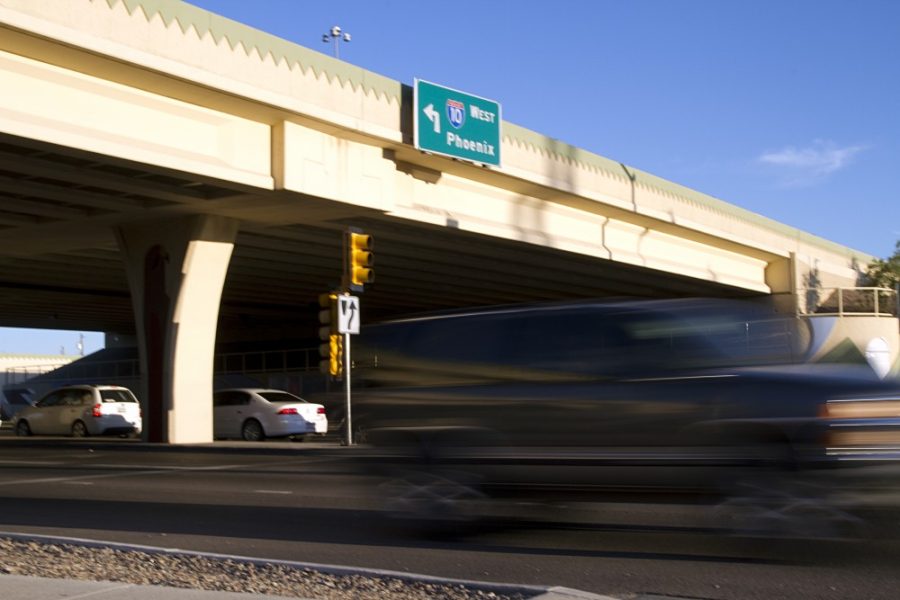The possibility of riding the rails between Phoenix and Tucson was raised during an Arizona Department of Transportation open house on the UA Mall on Friday.
Although the process for an intercity rail system is in the preliminary research stage, the idea of having a faster means of transportation between Tucson and Phoenix has been around for several decades. The first study was completed in 1980, according to Michael Kies, assistant director of planning and programming for the Department of Transportation. The plan wasn’t adopted until March earlier this year.
And with the rail system now in the early stages, the Arizona Public Interest Research Group is encouraging Arizonans to get involved and voice their opinions.
According to the organization’s website, 75 percent of Arizona’s population lives in either the Phoenix or Tucson area, and 85 percent of all jobs in Arizona are located in the area known as the Sun Corridor. The Arizona Public Research Interest Group predicts that these numbers will quickly increase in a matter of years. But the two cities are not connected by public transportation.
As with most large, state-funded jobs, what the rail system will cost and how it will be paid for are major concerns, both for the prospective riders and the Department of Transportation. While cost can only be determined through the study itself, funding for projects like this one follow a standard procedure, according to C.T. Revere, senior communications officer for the Safford district of the Department of Transportation.
“Right now, the only thing that’s funded is the study,” Revere said. “The way the Department of Transportation funds major projects like this is with a federal process … we get public input, we assess the environmental and cultural impacts, and once we get through all of these things, the state will start lobbying for federal funding.”
Regardless of the cost, there hasn’t been much talk of the project’s disadvantages.
Positive environmental effects have been a major consideration throughout the process.
“Putting in this rail system will result in fewer cars using I-10,” said Serena Unrein, public interest advocate for the Arizona Public Research Interest Group. “I think that would, in turn, create better air quality in both Tucson and Phoenix.”
There is also a strong emphasis on the opportunities for job creation.
“Building this will create a lot of construction jobs, and obviously it takes people to operate, maintain and work on those rails, as well,” Revere said.
ADOT also predicts the new rail system will have to work directly with other public transportation services, such as the local bus systems. The Federal Transit Administration will look for “feeder systems” — methods to get riders to and from the train stations — in all cities throughout the Sun Corridor, Kies said.
Many UA students have said they like the idea of a rail system between Arizona’s two largest cities.
Erin McRoy, a freshman studying English, said her lack of a car kept her from going to Phoenix.
“I don’t travel to Phoenix a lot, but that’s because I don’t have a car, so traveling is kind of a pain in the butt,” McRoy said. “But I do have family and friends that are in the Phoenix area, and it would be nice to visit them. So, yeah, I would definitely consider something like that … and it’s got to be better than the Greyhound.”
Some students who aren’t from Arizona have decided that the rail system could benefit them as well.
“I’m an out-of-state student from Utah,” said Alex Cohen, a senior studying finance and mechanical engineering. “Flights are so much cheaper from Phoenix that it would definitely pay for itself.”
The idea for an intercity rail system has some people feeling hopeful that it will work out in the years to come, but the project’s process depends on the opinions of the communities.
“Arizonans deserve public transportation,” Unrein said. “But its infrastructure is up to us.”









